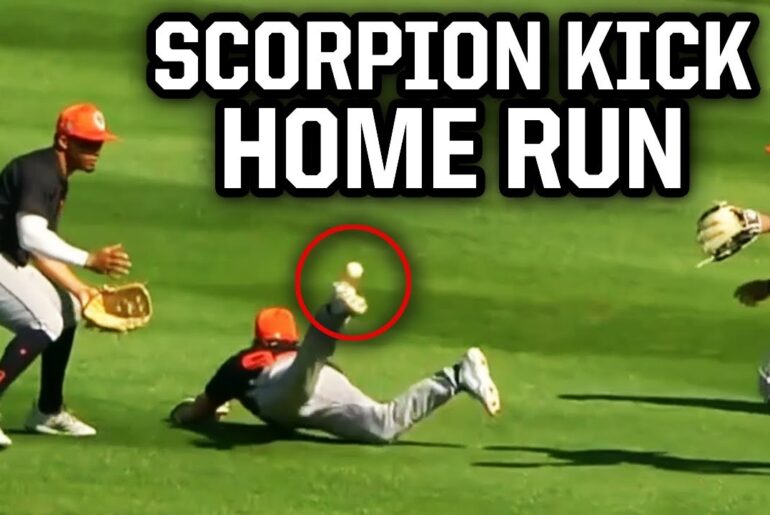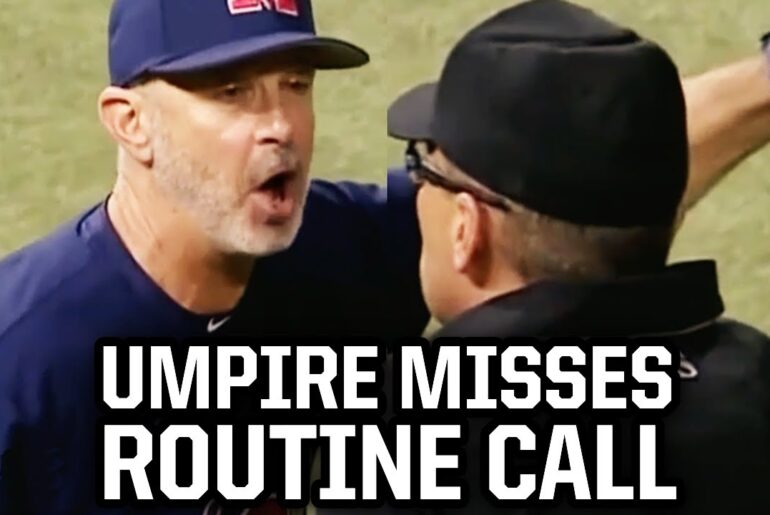In a thrilling matchup between Coastal Carolina and North Carolina, tensions ran high as the game approached a critical moment. With both teams tied at two runs apiece, there were two outs, and two men were on base. The Warehouse Games Tournament was in full swing, promising the winning team a grand prize of $10,000. Notably, subscribers had a chance to win $1,000 at the end of the tournament.
The Controversial Play
As the game reached a crucial juncture, the focus was on an outside fastball about to be delivered. However, a surprising twist occurred when the catcher faked inside and went outside, catching everyone off guard. The ball was put in play, and the runner from third base made a dash for home plate. The left fielder fired the ball towards home plate, and the runner was called out by the umpire.
Umpires’ Deliberation
Amidst the jubilation of the winning team and the despair of the losing team, the umpires huddled to discuss the controversial play. They decided to review the play to determine if the catcher obstructed the runner’s path to the plate, a nuanced rule that required careful consideration.
The Rules of Obstruction
To make a ruling on a play at the plate, the umpire must take a mental snapshot of the relative positions of the runner, the catcher, and the throw. Fortunately, in this case, the umpires had access to a literal snapshot of the play. According to Rule 255 notes one and six, the act of fielding the throw is crucial in deciding if obstruction occurred.
Interpreting the Rule
The umpires examined the snapshot, looking for specific criteria to determine if obstruction indeed happened. They asked themselves the following questions:
1. Is the runner attempting to score, and is he inside the dirt circle around the plate or within the last few steps of his approach to the plate? The answer was affirmative – the runner was attempting to score and was inside the dirt circle.
2. Next, they analyzed the position of the catcher and the throw. Was the catcher in the pathway of the runner? If yes, the catcher must have possession of the ball or be in the act of fielding the throw. The snapshot showed that the catcher was indeed in the pathway of the runner, but was he in the act of fielding the ball?
3. According to Rule 255 note 6, for a fielder to be in the act of fielding, he must be in a position where a legitimate attempt will allow him to receive a nearby throw that is coming directly toward him. The umpires had to use their judgment to determine if the catcher met this criterion.
The Umpire’s Call
The controversial moment arrived when the umpires disagreed on whether the catcher was obstructing the runner’s path. The coach of Coastal Carolina vehemently argued that the catcher was not in the act of fielding and obstructed the path. However, the umpire stood by his decision, claiming that the play was not conclusive enough to overturn.
The Aftermath
Despite the intense debate and ejection of the coach, the game continued, and North Carolina eventually emerged victorious. The final moments showcased some impressive plays and an exciting finish, proving that baseball games can turn on a dime.
Conclusion
The Coastal Carolina vs. North Carolina baseball game will be remembered not just for the thrilling gameplay but also for the controversial call at the plate. Baseball’s nuanced rules and the umpire’s judgment can sometimes lead to heated debates, reminding us that in the end, human decisions, whether right or wrong, are part of the game’s charm. Regardless of the disputed call, the game showcased the players’ talents and the joy of competition, making it an exciting spectacle for all baseball fans.



